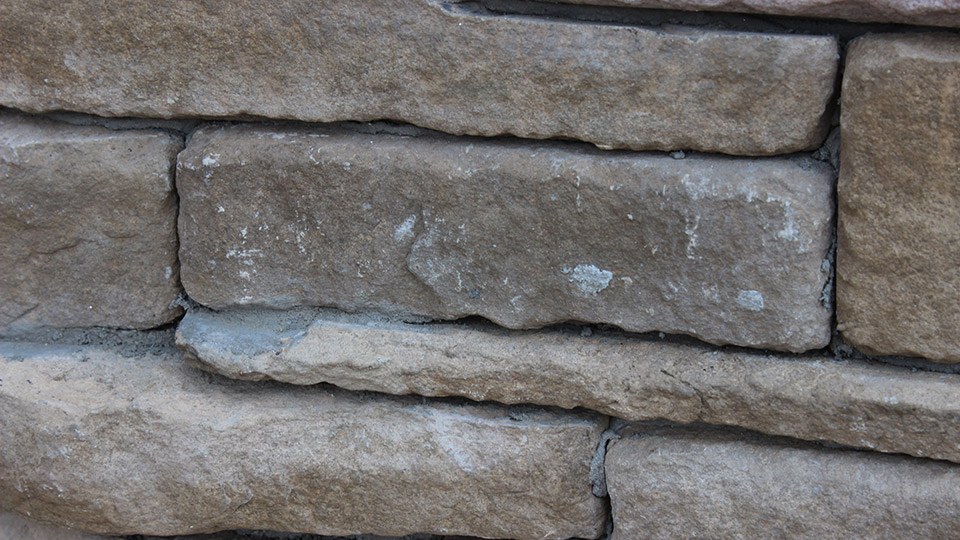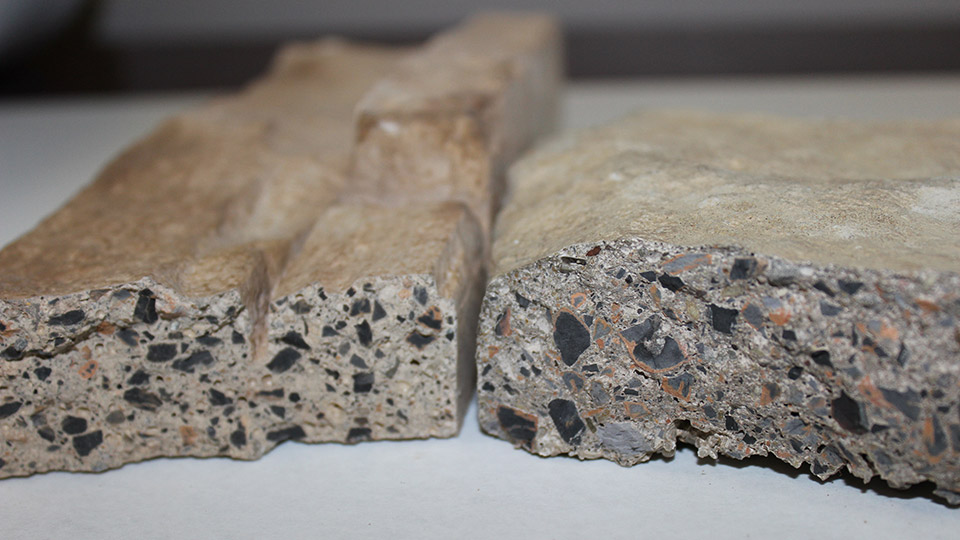
Even when applying stone from the top down mortar will inevitably find its way to the face of the adhered veneer, requiring cleaning. This also especially occurs when grouting a stone profile that’s not stacked.

Because the aesthetic surface of the manufactured stone is so thin, it requires a very gentle cleaning process. An integrally colored stone as pictured on the left will retain a more natural look even if some of that surface is etched because it is colored in a similar palette.